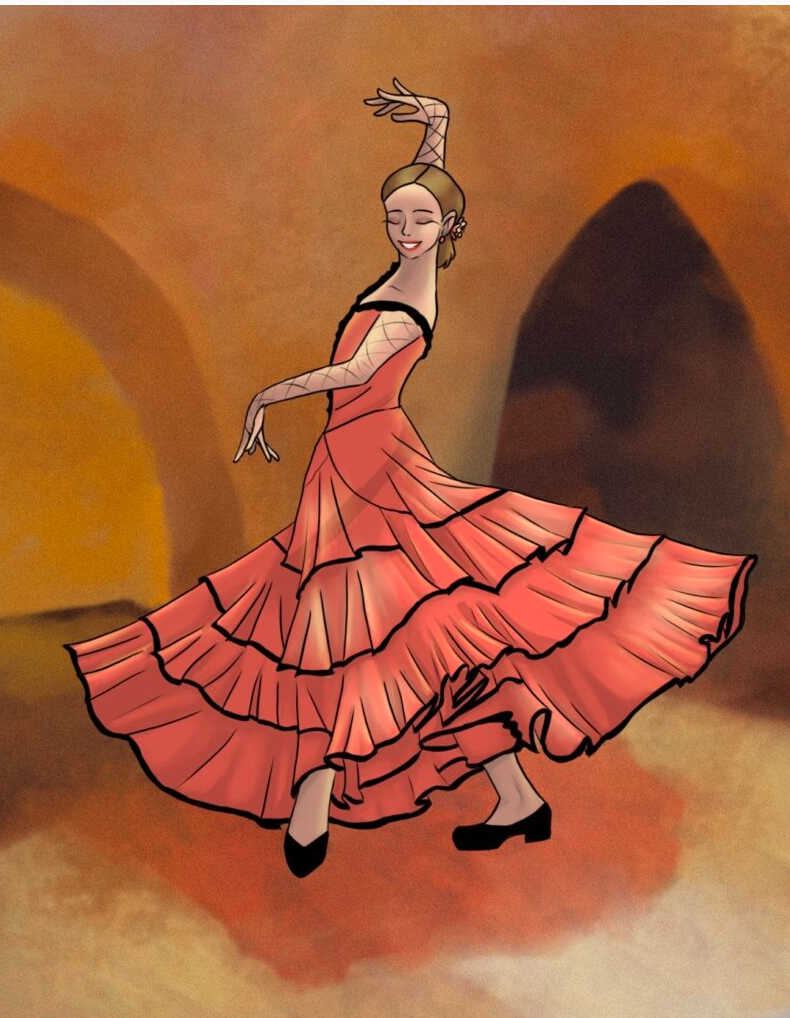Flamenco dancing: thrills and fril
November, 2021
I have been dancing for as long as I can remember. Whether it was escaping restless nap times in preschool by going to ballet classes or spending time performing for the public at Communiversity, dance has always had a place in my life — I spent 12 years wholeheartedly committed to ballet. Although I quit last May due to the heavy commitment, I still carry the musicality and skill by dancing flamenco.
Seven years ago, my mother, who danced flamenco 30 years ago, encouraged me to start taking flamenco lessons every Saturday at the Arts Council of Princeton. I remember being nervous and unenthusiastic when I went in for my first class. But as soon as I stepped into the studio, my idea of dance completely changed. I learned that dance is a lot more than just a sequence of steps — it is an emotional response to the music. Flamenco itself is an entire musical genre, so everything I do in a performance has to connect to the music. I could be dancing to a slower guitar solo where I have to convey sadness or introspection or to a faster, more rhythmic beat where I focus on complex footwork to express liveliness and excitement. But what remains true in all choreography is that flamenco serves as a physical embodiment of music.
Throughout my years dancing, flamenco has helped me grow into a confident performer. When I step onto the stage, it’s as if nothing matters except moving to the music. At the beginning of a show, I am always a bit nervous that something will go horribly wrong, and sometimes it does. The speakers may not work, the stage might be too small or, even worse, we might have to dance on carpeted or tile flooring (which is dreadful, considering flamenco shoes are heels with miniscule nails stuck into the bottom of them). But the show must go on, and if the crowd is pleased by the end, I am exhilarated. Performing in front of a live audience is a rewarding experience, especially the applause after hitting my final pose. Flamenco means a lot to me because it is not something that I’m being pressured into; it isn’t for a grade, and I’m not forcing myself to dance. I simply want to perform.
Although I dance alone on stage, I spend more time with my mom thanks to flamenco. Together, we’ve gone to flamenco shows and concerts, shopped for new frilly polka-dotted skirts and fiery red shoes, and listened to flamenco music. Because of this connection with my mom, we constantly try to help each other when we are having trouble with choreography. By giving me feedback, she has made me a better dancer, and I’m incredibly thankful for her. Flamenco has made my love for dance greater than it originally was and, for that, I am eternally grateful that my mom made me go to that one dreaded lesson seven years ago.